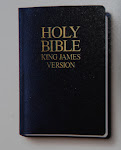After sightseeing in New York City we drove to Pennsylvania. Our objective was to visit Gettysburg and review some of the history of the Civil War. However, on the way there we took a detour to a very fun place, one that I have long wanted to visit. What city would have a street named "Chocolate Ave" . . .
and chocolate kisses for street lights?
If you guessed Hershey, Pennsylvania you would be correct! What's not to love about a city founded because of chocolate candy! Below are the smoke stacks from the actual Hershey Plant.
Milton Hershey, a successful candy maker, wanted to produce milk chocolate candy so he acquired 1,200 acres of farm land near his birthplace in PA. There, he could obtain the large supplies of fresh milk needed to perfect and produce fine milk chocolate. Through trial and error, he created his own formula for milk chocolate. On March 2, 1903, he began construction on what was to become the world’s largest chocolate manufacturing plant. Hershey’s milk chocolate quickly became the first nationally marketed product of its kind.
Because the land was surrounded by dairy farms, he was able to use fresh milk to mass-produce quality milk chocolate. Hershey envisioned a complete community around his factory site. He built a model town for his employees that included comfortable homes, an inexpensive public transportation system, a quality public school system and extensive recreational and cultural opportunities.
Hershey avoided building a faceless company town with row houses. He wanted a home town with tree-lined streets, single and two family brick houses, and manicured lawns. He was concerned about providing adequate recreation and diversions, so he built Hershey Park, which opened on April 24, 1907. Amusement rides, a swimming pool, and a ballroom were added.
We had a good time going through "Hershey World" learning how milk chocolate is made. The company uses 250,000 gallons of fresh milk each day to make their candy. We watched a 3D movie and felt like kids in a candy store! (Well, we WERE in a candy store.)
***********************************************************************************
The next day was reserved for more serious activities - touring the battlefields in Gettysburg. We learned a lot about this famous Civil War conflict. We saw the battlefields that are being restored to the way they looked during the encounter between the Union and Confederate Troops.
We learned about skilled military leaders that fought with their troops in this famous 3 day battle of the Civil War that ended in a badly needed Union victory.
Interestingly, within this National Military Park there are 1,400 different monuments and markers and 400 cannons, many of them from the battle in 1863. Many of these monuments are erected by the veterans of the Union regiments and depict some aspect of the battle.
The men from these regiments came from the same local and usually knew each other. I was touched by the story about the monument below: Most of the monuments depict aspects of battle, but the men in this regiment wanted to focus on happier times so they transported a rock from their local swimming hole to honor their regiment.
We were pretty awestruck by this Cylorama we saw in the Gettysburg National Military Park Museum and Visitor Center.
The painting is 42 feet high and 377 feet around. It was painted by a French artist and his team in less than a year and weights an estimated 12.5 tons. It was originally completed in 1883 and restored to be displayed in Gettysburg in 2008.
Again we were sobered as we walked in the Gettysburg National Cemetery. When the battle was finished and the armies left Gettysburg, over 51,000 soldiers were dead, wounded and missing. Most of the dead lay in hastily dug and inadequate graves and some had not been buried at all.
Pennsylvania's governor made arrangements for a burial ground and within four months of the battle reinterment began on 17 acres that became Gettysburg National Cemetery.
It was dedicated on November 19, 1863 and it was here that President Abraham Lincoln gave his now famous speech that gave meaning to the sacrifice of the dead and inspiration to the living. His speech lasted two minutes.
Contrary to popular belief, Lincoln did not write the speech on the back of an envelope during the trip to Gettysburg, but took great pains in its formulation. He composed the first draft in Washington and revised it in Gettysburg.
We appreciated what we learned about this historic battle and were humbled to walk what is now know as "hallowed ground."






















.jpg)


No comments:
Post a Comment